Roadway lighting vs. street lighting
An LED roadway light is a highway lighting system designed for use on freeways, expressways, limited access roadways, and roads where pedestrians, cyclists and parked vehicles are generally not present. This category of products is so named for the purpose of differentiation with street lights which are used to illuminate roads with presence of both vehicular and pedestrian traffic. In the lighting industry, highway lighting and street lighting are two different types of roadway lighting applications. Highway lighting is intended to aid navigation and orientation of the vehicle driver on the road and help with the detection of obstacles within and beyond the vehicle’s headlights. The purpose of street lighting is to produce quick, accurate and comfortable visibility that may safeguard, facilitate, and encourage vehicular and pedestrian traffic, both on and adjacent to the street. In a nutshell, highway lighting serves the vehicular traffic whereas street lighting must ensure sufficient visual conditions for all road users which include motorists, pedestrians, and cyclists.
Design considerations
The design methodology for highway lighting employs luminance as the design criteria for the lighting system. It determines the amount of light reflected from the pavement in the direction of the driver. Pavement luminance in an adequate amount provides the driver with visual information on pavement markings, small objects on the road, roadway boundaries, and conflict areas such as crosswalks and intersections. The average pavement luminance required is 0.4 to 0.6 cd/m2 for freeway lighting and 1 cd/m2 for expressway lighting. Street lighting needs to consider additionally the object luminance that provides visibility of pedestrians, cyclists, and objects within street environments. A minimum amount of vertical illuminance at 1.5m above pavement should be specified for street lighting design.
Oftentimes, the design of street lights involves aesthetical considerations for the intention of visual coordination with the streetscape and adjacent architecture. In contrast, highway lighting is more straightforward in design. The absence of the requirement on vertical illuminance allows to maximize fixture spacing by fully making use of the longitudinal light distribution of horizontal illuminance. The lighting system design does not have to compromise functional utility and lighting application efficiency (LAE) for aesthetical integration with the surrounding environment.
Style and scale
The key to designing with highway lighting is to select optimal mounting height, arm length, lumen output, and light distribution combination to maximize the efficiency of the system given the pole spacing requirements. Roadway luminaires are generally mounted on davit-style, truss-style and mast-arm poles which have cantilevered arms. Davit-style, truss-style and mast-arm lighting is very efficient in transverse (across-road) light distributions. Depending on the width of the road and type of pole spacing (staggered, single sided, or opposite) various combinations of lumen packages and pole heights are applied in highway lighting applications.
Roadway luminaires are mounted on heights of 9 m to 15 m. 9 m to 10 m mounting heights are usually accommodated by luminaires with system outputs of 15,000-20,000 lumens. 11 m to 12 m mounting heights will need a luminaire output of 20,000-30,000 lumens. A luminaire mounted at a height of 13 m or above is usually required to produce a minimum output of 40,000 lumens. Taller poles assist in achieving uniformity requirements and maximum spacing but may have complications of obtrusive high angle light and reduced levels of vertical illumination. Davit-style, truss-style and mast-arm lighting typically arranges the optical system of the luminaire perpendicular to nadir (parallel to the roadway. Spigots (head joints) with tilt adjustments may be provided for optimal orientation and aiming of the luminaire.
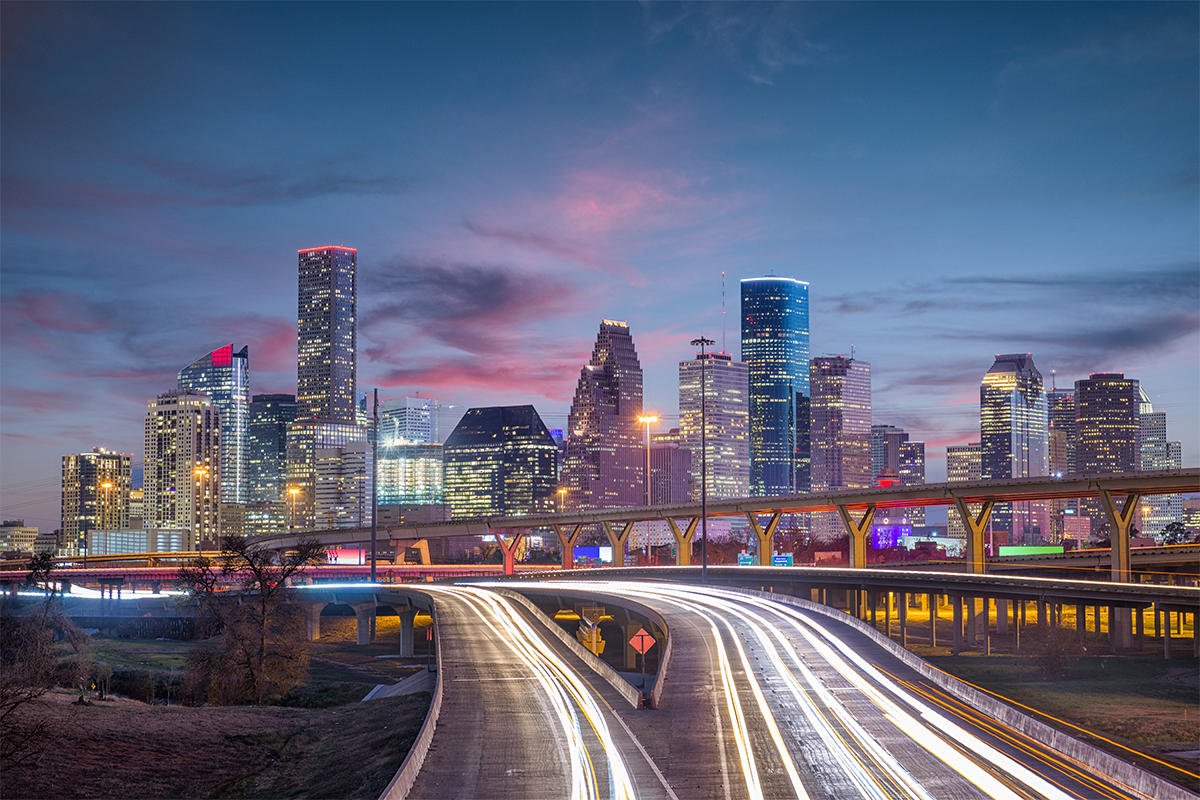
Legacy lighting technologies
Roadway lighting was previously provided by lamp-based systems that use self-contained light sources, such as metal halide (MH), high pressure sodium (HPS), and low pressure sodium (LPS) lamps.
While these gas discharge lamps produce a significant amount of light, a large percentage of rated lamp lumens is not emitted by the luminaire because of their omni-directional emission pattern. Gas discharge lamps often cause the area directly below the roadway luminaire to have a much higher illuminance than areas farther away from the beam axis of the luminaire. Poor uniformity of lighting results in a waste of light, visual discomfort, and even safety implications due to the visually challenging adaptation between areas of different luminance levels. Highway lighting requires the average uniformity of pavement luminance to be maintained at 3.5 (freeway) or 3 (expressway). To achieve this level of luminance uniformity pole spacing must be minimized, which increase both the first cost and operating cost of the lighting equipment.
Gas discharge lamps require the use of large and complex optical devices to capture the light and direct it towards the target area. The bulky optical system leads to an increased effective projected area (EPA) which presents more resistance to the wind. This would call for the use of a more robust elevating structure, which also adds to cost.
Gas discharge lamps also have very limited lighting control options due to their long start and re-strike periods as well as the narrow dimming range and reduced lifespans in in applications with very frequent on/off switching. As code requirements becomes more stringent with respect to allowed lighting power density, the inclusion of lighting controls is critical for a lighting project to exceeding mandatory energy-efficiency performance requirements. Traditional roadway lighting products are obviously incompetent in leveraging the power of lighting controls.
Furthermore, gas discharge lamps have poor color characteristics. These light sources have minimal color temperature options. HPS lamps have a low color render index (CRI) of 22-30 and LPS lamps have a negative CRI (-44).
LED lighting takes its turn to redefine ROI
The profound energy, economic, performance, design and application benefits enabled by solid state lighting based on LED technology propelled a massive technological switchover to the new technology for roadway lighting. Because energy costs typically trend towards over time and roadway lighting involves the use of a great number of high wattage lighting systems, energy efficient operation is an important aspect of roadway lighting design. The luminous efficacy of LEDs has surpassed legacy lighting technologies and still has significant room to improve toward the practical limit of 255 lm/W for phosphor-converted LED architectures.
LED lighting provides energy savings beyond improved source efficiency. There can be significant additional energy savings with LED lighting through efficient optical control, optimization of energy use to deliver the right amount of light output for the application, and optimization of the spectral power distribution (SPD) for the function of the light.
LEDs emit light in a specific direction, which, in conjunction with the small source size, eliminates the need for optical systems that are bulky and inefficient while simultaneously achieving a high luminaire efficacy. Minimal optical losses are only one of the optical design advantages with SSL technology. Virtually any light emitting surface (LES) can be formed with discrete LED packages to facilitate uniform distribution of light, which reduces the waste of light and improves the quality of lighting.
LED lighting ushers in better intensity effectiveness with its full, instantaneous dimmability that lends LED lights perfectly to various lighting control strategies. Providing an optimal amount of light required for a particular application at the lowest possible energy input thus becomes possible with LED lighting.
Historically, maintenance costs account for a sizable portion of the life cycle cost for a lighting project due to the short operational life of legacy light sources. Maintenance costs are greatly reduced with the significantly extended lifetime of a properly developed LED system.
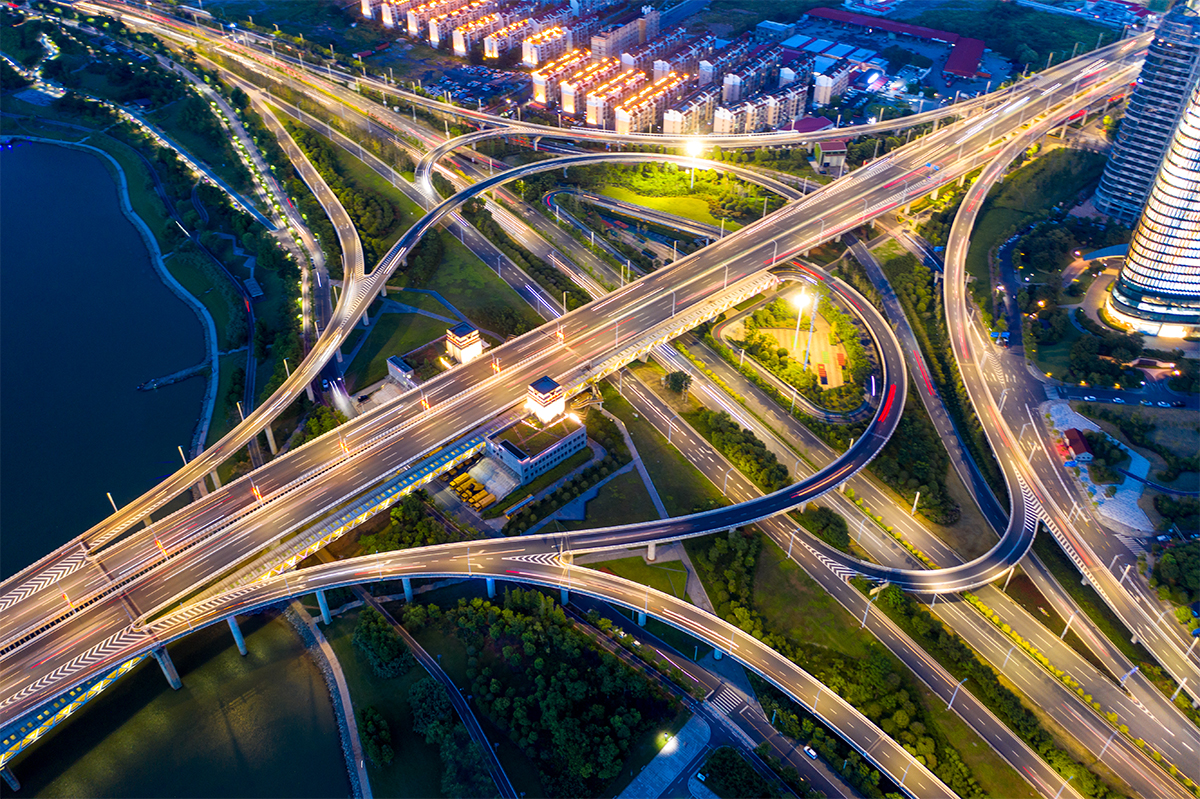
Design and engineering
The design of an LED roadway light revolves around integrating LEDs with thermal, electrical, optical and mechanical sub-systems to achieve the required form factor, beam pattern and performance. The sub-systems must work in unison to provide an operating environment where the current-driven, temperature sensitive LEDs can perform to their full capacity. The form factor and system architecture of traditional light fixtures fail to address the multidimensional needs from the LEDs.
An LED roadway light thermally and electrically interfaces a light engine, rather than a lamp, to its operating environment which is typically controlled by the LED driver and thermal management system. It also exercises control of environmental conditions to protect the light engine and other components that are prone to failures or degradation under environmental stresses.
The LED light engine is an integrated assembly comprised of LED packages that are mounted on a metal core printed circuit board (MCPCB). Lenses are indexed to the circuit board to extract light directly from the source and provide precise direction of the light. The light engine is designed either as a board assembly that mounts to the heat sink of the luminaire, or as a modular assembly that has an integral heat sink and is sealed to maintain the required ingress protection (IP) rating. The modular design provides a scalable offer and design flexibility to fit to diversified application requirements while facilitating fixture maintenance and upgrades. A calculated number of modular LED engines can be framed up to make a complete roadway luminaire.
System integration
Systems development for an LED roadway light is a complex exercise. Each and every luminaire component is subjected to extensive design qualification. In integrating LEDs into a system, the behavior of the LEDs under predictable thermal and electrical stresses should be carefully evaluated. An LED chip, which is p-n junction semiconductor die, must be packaged before it can be used in an application. Semiconductor packaging provides mechanical support and environmental protection for the LED die, creates interfaces for electrical and thermal connection to the die, and broaden the bandwidth of the emitted light with phosphor down-converters.
Selection of the packaging architecture and material is very important because it defines the spectral performance (color rendering, color temperature, scotopic/photopic ratio), luminous efficacy, and reliability of the LEDs. Roadway luminaires are typically high output LED systems in which the light source may be stressed over a wide range of drive currents and junction temperatures. Implementation of high power LED architectures with high reliability calls for high drive current, high operating temperature capable LED packages. LED roadway lights are currently equipped with high power LED packages which are based around the use of a ceramic substrate. The fundamental packaging philosophy of these LEDs enables significantly better lumen maintenance than mid-power plastic-leaded chip carrier (PLCC) LEDs.
Thermal management
In order to harvest the legendary longevity advantage of the LED technology, the junction temperature of the LEDs must be maintained within functional and absolute maximum limits in all operating conditions. Thermally stressing LEDs beyond their safe limits will affect lumen maintenance and shorten useful life. Growth of intracrystalline defects in the active region of the diode can be accelerated at high junction temperatures, which leads to the permanent reduction in internal quantum efficiency (IQE) of the LED through some non-radiative recombination processes, or the injection loss outside active region. Thermal degradation of packaging materials will reduce light extraction efficiency (LEE). The temperature increases in outdoor lighting systems are usually caused when system’s ability to draw heat away from the LED junction is out of thermal equilibrium with the heat load dissipated by the wasted electrical power.
The amount of heat that can be removed from the LED junction depends upon the ambient temperature as well as the design of the thermal path from the LED die to the surroundings. Thermal management for an LED roadway light aims to minimize the thermal resistance of all components (the LED package, printed circuit board, and heat sink) along thermal path, together with all the associated interface resistances (e.g., the interconnect thermal resistance between the LED package and the PCB, the interfacial contact resistance between the PCB and heat sink). Heat sinks are a critical component of the thermal path. A high performance passive heat sink will be constructed from a high thermal conductivity materials such as extruded or die cast aluminum. Heat sinks should be designed to have a large surface area with an aim to maximize contact with the surrounding air. Outdoor LED luminaires often take advantage of aerodynamics to increase the convection heat transfer coefficient of the heat sink.
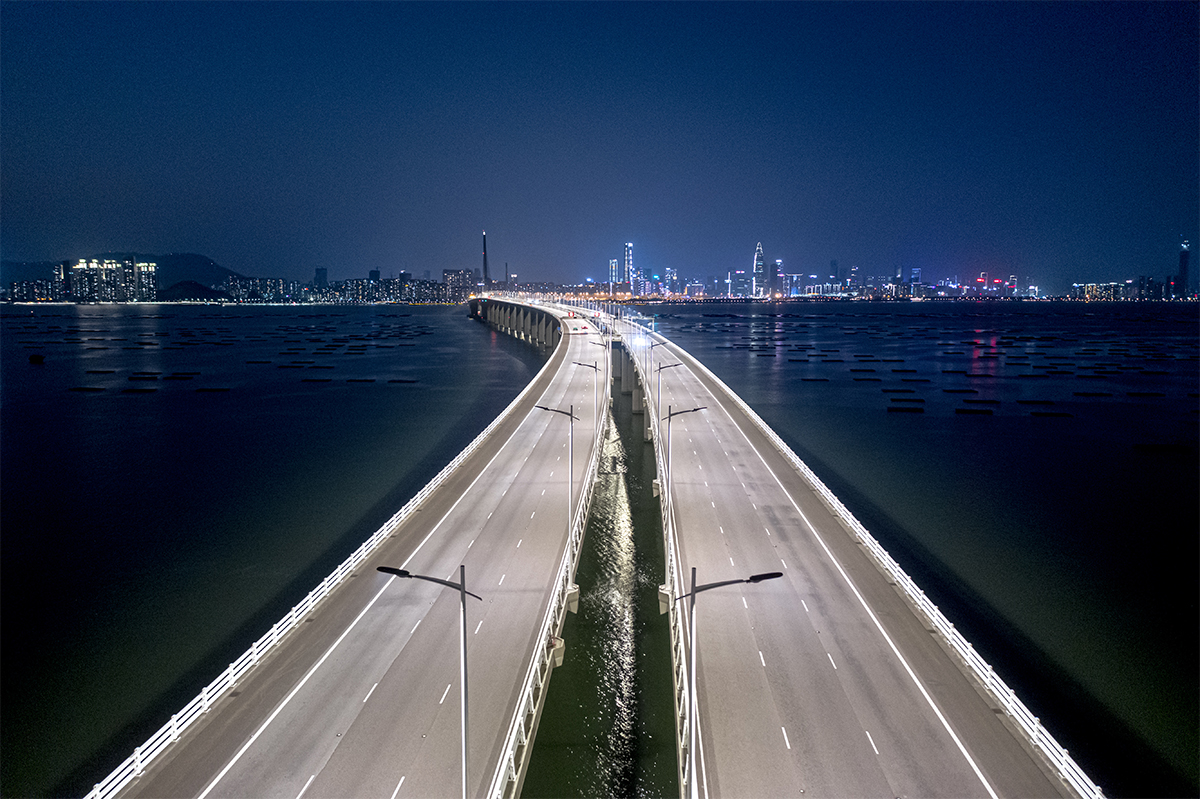
Line and load regulation
LEDs are designed to operate under specified ranges for electrical power. LED drivers regulate the amount of electrical power applied to the LED light engine. The driver circuit should be configured to convert the AC line voltage into a DC output with electrical characteristics matched those of the LED array.
Most LED roadway lights use LED drivers that are designed as switching power supplies and typically employ a two-stage design. The driver has dedicated stage for power factor correction (PFC) and a dedicated DC-DC stage. This configuration is highly advantageous for roadway lighting applications that often necessitate the use of LED luminaires with a high power rating (100W or greater wattages).
The two-stage design in high power applications overcomes many of the problems associated with the use of single stage LED drivers which combine functions of power factor correction and DC-DC converter in one circuit. It not only reduces the current ripple flowing into the LEDs, enables full range dimming and high efficiency power conversion, but also addresses especially challenging requirements, including high voltage operation, ultra-wide input voltage ranges, immunity to power surges and other electrical events that cause abnormalities. The built-in high surge capability allows for reliable operation of the driver and light engine under the electrical overstress (EOS) of an electrostatic discharge (ESD), in-rush current, or other types of transient electrical surge.
The vulnerability of outdoor LED lighting systems to high-voltage surges (e.g., lightning strokes) is widely recognized. A well-protected roadway luminaire should integrate protection for both modes of circulation: common surge (line-to-ground) and differential surge (line-to-line).
Lighting control
The LED driver is crucial in operating LED roadway lights not only for its role of transforming power and protecting downstream components against overvoltage, short circuit, overload, and other abnormal operating conditions, but also for its ability to control the light output. Many drivers allow dimming of the connected LEDs and can operate on control signals communicated through an interface which can be 0-10V DC or DALI. Adaptive controls such as dusk-to-dawn photocontrols (photocells) and motion sensors can be installed to operate the driver and control individual fixtures or as a networked system for a more efficient utilization of electricity.
The incorporation of communications capabilities and software-based intelligence transforms roadway luminaires into lighting nodes that can be addressed and controlled in groups or individually to execute commands based on pre-defined software rules or to perform remote configuration and monitoring. Adding Internet Protocol (IP) connectivity to LED roadway lights facilitates an unprecedented exchange of data among connected devices and implementation of sophisticated controls through software applications provided by IoT platforms.
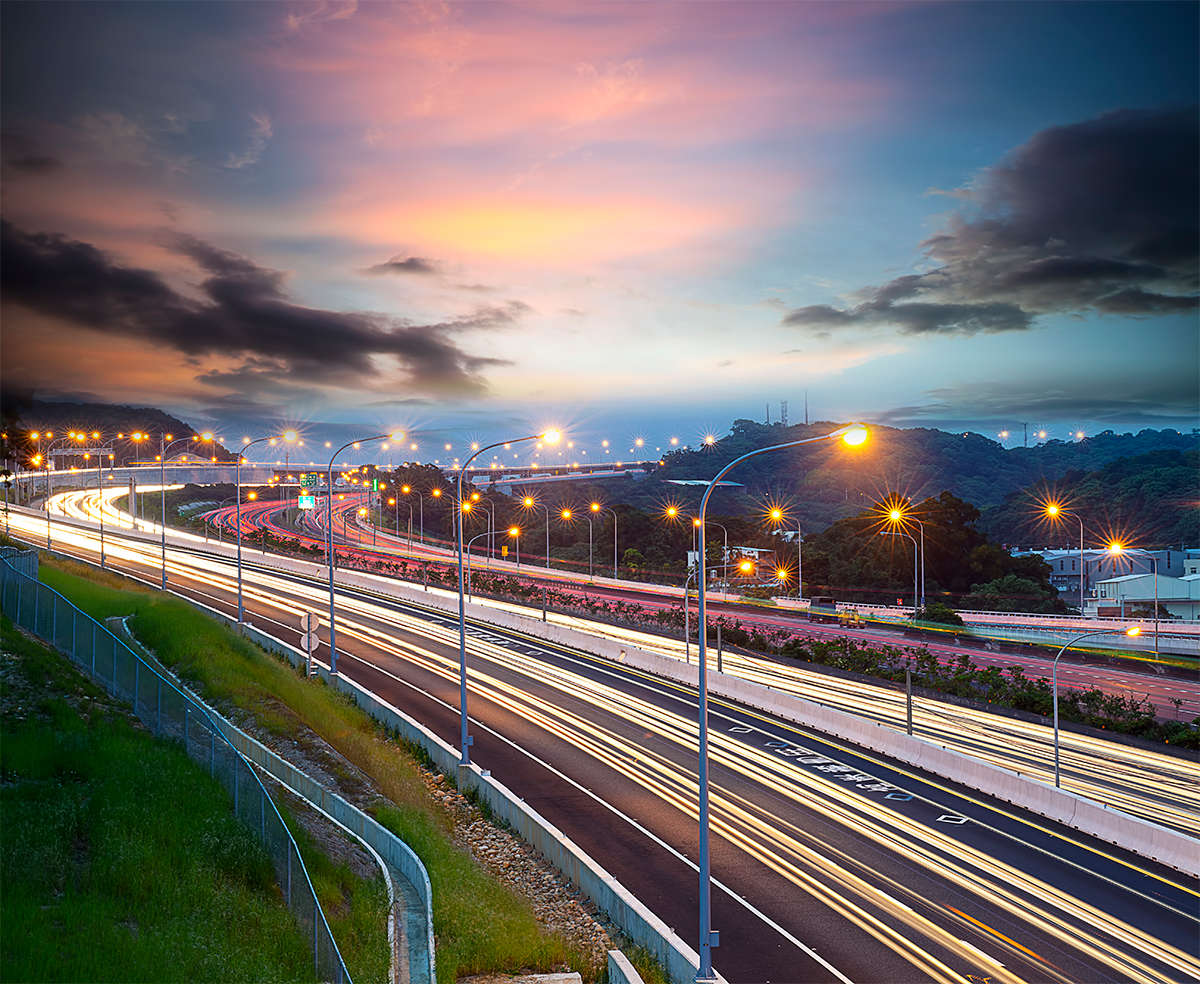
Optical control
The optical system in the luminaire is used to regulate luminous flux from the LEDs such that the output beam of luminaire will meet the desired photometric specification. The efficiency and effectiveness with which a roadway luminaire delivers light to an intended target are just as important as how much light is generated and at what efficacy.
Roadway luminaires produce optical distribution patterns that can be identified by their reach in front (transverse light distribution) and to each side (longitudinal light distribution) of a single fixture location.
- Longitudinal light distributions are divided by the spacing-to-mounting-height relationship into three groups: short (S), medium (M), and long (L). LED roadway lights are often designed to produce a long distribution such that a long luminaire spacing with the required luminance uniformity can be achieved.
- Transverse light distributions are classified with respect to the width of the road and the location of the luminaire to the area to be illuminated. The most commonly used distribution types for roadway lighting applications are Type III and Type IV.
Beyond distribution and range, roadway luminaires are defined by how well they control obtrusive light (light trespass, sky glow, and glare). Based on the IES Luminaire Classification System (LCS) metrics on a luminaire’s in various backlight (B), uplight (U) and glare (G) zones, a roadway luminaire is given a BUG rating which can assist lighting designers in understanding the obtrusive light control of the luminaire’s optical system. Generally speaking, lenses are more efficient in optical control than reflectors. Characteristics unique to LEDs afford an opportunity for the LED system designer to extract light directly from the source and obtain a superior photometric specification with miniature compound lenses.
Control over environmental factors
When a luminaire is installed outdoors, there are many environmental factors that can affect the rate of lumen depreciation, system degradation, or the likelihood of catastrophic failure. The resistance of roadway luminaires against foreign matter (both solid and liquid), which is indicated by the so-called Ingress Protection (IP) code, is an important part of mechanical engineering. It’s a usual practice to seal the luminaire to an IP66 rating or above so that the ingress of moisture, dust, contaminants and insects is completely blocked. Extreme changes in ambient temperature or the constant heating and cooling cycle of the self-heating light engine can cause a pressure differential within a sealed enclosure. Installing a membrane vent in a sealed enclosure can equalize pressures while blocking water and contaminants, thereby increasing the service life of seals.
Special attention should be paid to the reliability of solder joints between the LED packages and PCB. In addition to maintaining a strong metallurgical bond, solder joints must have excellent creep resistance because repetitive, high-magnitude thermal cycles can generate a significant thermomechanical stress on the solder joints.
The aluminum luminaire housing should be provided with corrosion protection from environmental elements. Chemical surface treatments are often used to create a barrier between the corrosive environment and the aluminum surface while improving the adhesion of subsequently applied powder coat finish.

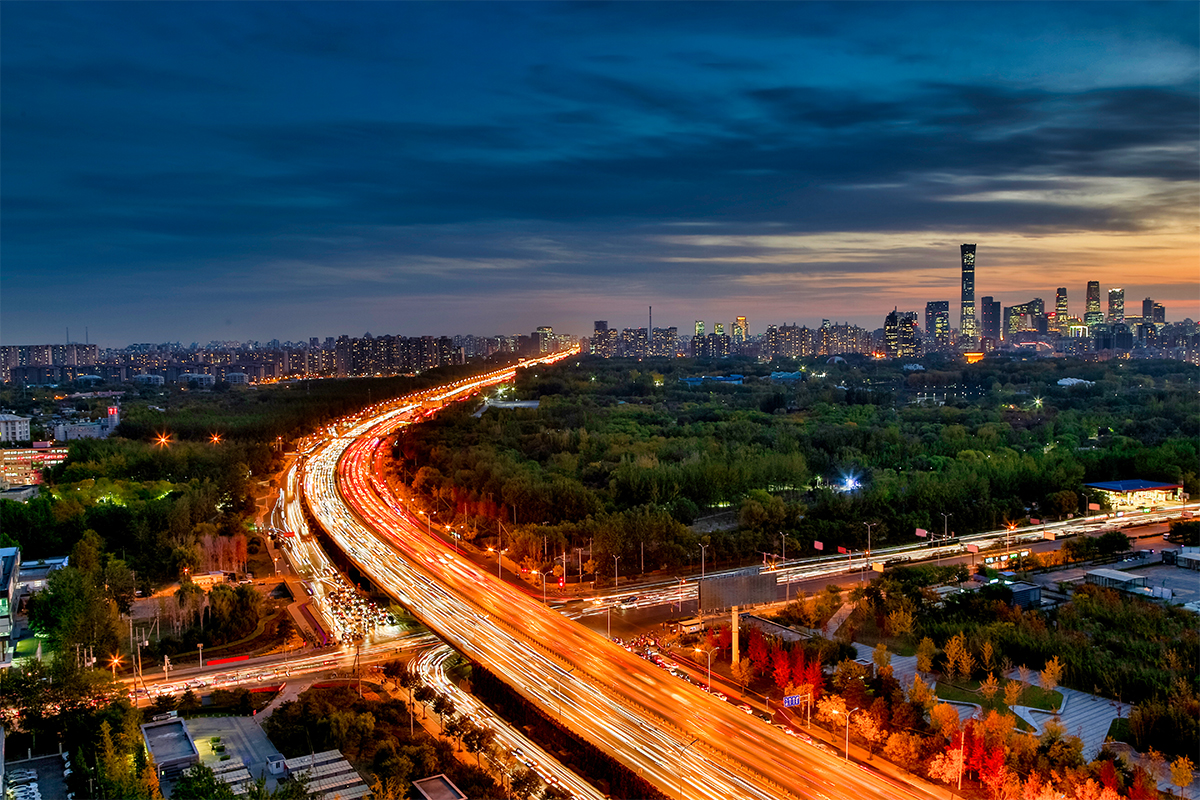
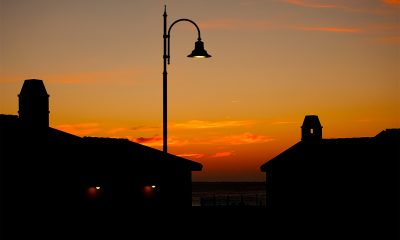


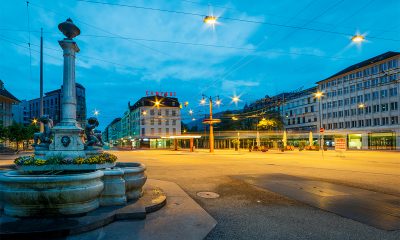
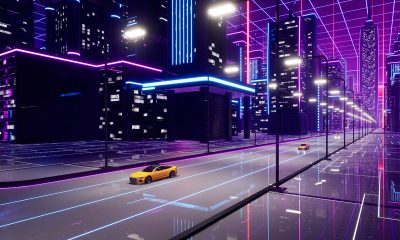





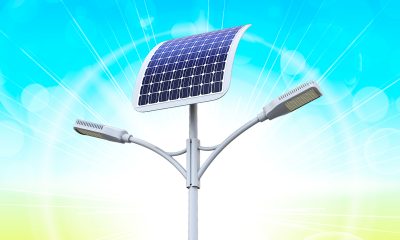
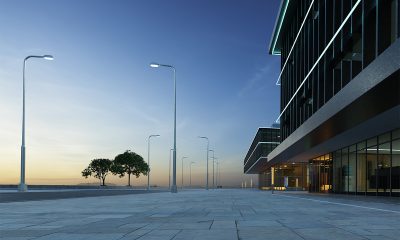





Loading...
New member